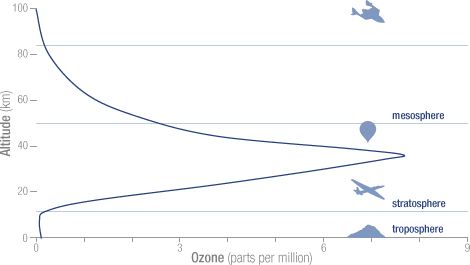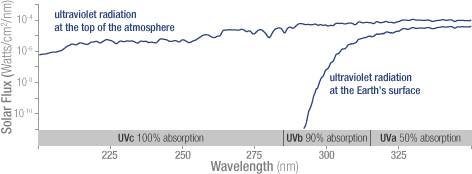In the early hours of 15 October 2016, the Parties to the Montreal Protocol
on Substances that Deplete the Ozone Layer unanimously adopted the Kigali
Amendment, paving the way for the reduction of powerful greenhouse gases -
hydrofluorocarbons (HFCs).
The world hailed the move as the single largest step made so far towards
keeping global warming below two degrees Celsius, a key commitment of the Paris
climate accord.
Below, we explain just how important the Kigali Amendment is, how it may
impact the world around us and what it will take to get us there.
Why HFCs?
HFCs, or hydrofluorocarbons are commonly used in air conditioners,
refrigerators, aerosols, foams and other products. They were introduced as
substitutes for chlorofluorocarbons (CFCs) and other substances harmful to the
ozone layer, which were being phased out under the Montreal Protocol.
But what was meant as a solution to the ozone hole problem, soon became a
source of another major global threat, as it turned out that HFCs are powerful
greenhouse gases, with a global warming potential thousands of times larger than
that of carbon dioxide (CO
2).
On a planet where temperature is steadily rising and a rapidly growing middle
class can increasingly afford air conditioners and refrigerators, the demand for
HFCs is skyrocketing. The consumption of HFCs is estimated to expand by about 10
per cent each year, making it not only one of the most powerful greenhouse
gases, but also the fastest growing one.
Limiting the use of HFCs under the Montreal Protocol is expected to prevent
the emissions of up to 105 million tonnes of carbon dioxide equivalent of
greenhouse gases, helping to avoid up to 0.5 degree Celsius of global
temperature rise by 2100.
This seemingly small difference could actually have an immense positive
impact on food production, water availability or survival of coral reefs, as
shown by a recent
study
by European scientists.
Why the Montreal Protocol?
The Montreal Protocol is the greatest success story of environmental
cooperation in history and perhaps the most successful international accord ever
signed.
Agreed in 1987, it is, together with the Vienna Convention for the Protection
of the Ozone Layer, the first UN treaty to achieve ratification by every country
on Earth. It is the unprecedented level of international cooperation that has
allowed the protocol to avert what could have been the greatest environmental
catastrophe in human history.
Measures taken by the Montreal Protocol have led to a 98 per cent decrease in
the production and use of ozone-damaging chemicals, helping the ozone layer to
start recovering ahead of schedule, saving an estimated two million people each
year by 2030 from skin cancer and slowing down climate change.
Why is the Montreal Protocol so effective?
The Montreal Protocol has a number of special mechanisms that ensure its
parties meet the agreed targets.
The first of its kind financial mechanism, which includes a Multilateral
Fund, ensures that no country is left alone in its struggle to limit the
chemicals controlled by the protocol.
In addition, the protocol has a unique non-compliance procedure, which
ensures that countries that exceed their quotas can swiftly return on track to
achieve the agreed goals. These mechanisms have proven very effective with
ozone-depleting substances, allowing countries to consistently meet their phase
out targets ahead of schedule.
How does it work?
- Financial mechanism
The Multilateral Fund provides financial and technical support for developing
countries to comply with their commitments. Since 1991, over $3.4 billion has
been provided to developing countries through the fund, to help them to meet
their obligations under the protocol.
- Non-compliance regime
The Protocol's unique non-compliance procedure focuses on amicable solutions
and assistance rather than naming and shaming or punishment. Past experience
shows that parties feel comfortable to report their own non-compliance issues
and seek assistance and solutions.
- Assessment Panels
The Protocol's three Assessment Panels regularly provide countries with
up-to-date, independent information on scientific, technical, economic and
environmental issues, enabling them to take informed and timely decisions on
complex matters and base their policies and actions on sound science.
- Exemption mechanisms
The Protocol has developed and used various exemption mechanisms to address
the lack of suitable alternatives to ozone-depleting substances. Through this
mechanism, the Montreal Protocol ensures that phasing out of ozone- or
climate-harming chemicals is not disruptive to societies.
- Non-party trade provisions
They prohibit or restrict countries that have ratified the protocol or its
amendments from trading in controlled substances with states that are yet to
ratify it. This creates an incentive for countries to promptly join the Protocol
and its amendments. The provisions are applied in a flexible way to ensure that
all parties adhere to them without compromising their economic performance.
How will it work?
Under the Kigali Amendment countries have agreed to add HFCs to the list of
controlled substances. They have also approved a timeline for their gradual
reduction by 80-85 per cent by the late 2040s.
First reductions by developed countries are expected in 2019. Developing
countries will follow with a freeze of HFCs consumption levels in 2024 and in
2028 for some nations.
What's next?
Following the unanimous adoption of the Kigali Amendment by all the parties
present at the 28
th Meeting of Parties to the Montreal Protocol, the
next step is its ratification by the parties.
The Kigali Amendment, will enter into force on 1 January 2019, provided that
it is ratified by at least 20 parties. If that condition is not met by 2019, the
Amendment will become effective 90 days after 20 parties ratify it.
Source:
http://www.unep.org/newscentre/Default.aspx?DocumentID=27086&ArticleID=36286&l=en

























 The concentration of ozone varies with altitude. Peak concentrations, an average of 8 molecules of ozone per million molecules in the atmosphere, occur between an altitude of 30 and 35 kilometers.
The concentration of ozone varies with altitude. Peak concentrations, an average of 8 molecules of ozone per million molecules in the atmosphere, occur between an altitude of 30 and 35 kilometers.  Solar ultraviolet radiation is largely absorbed by the ozone in the atmosphere—especially the harmful, high-energy UV-a and UV-b. The graph shows the flux (amount of energy flowing through an area) of solar ultraviolet radiation at the top of the atmosphere (top line) and at the Earth’s surface (lower line). The flux is shown on a logarithmic scale, so each tick mark on the y-axis indicates 10 times more energy.
Solar ultraviolet radiation is largely absorbed by the ozone in the atmosphere—especially the harmful, high-energy UV-a and UV-b. The graph shows the flux (amount of energy flowing through an area) of solar ultraviolet radiation at the top of the atmosphere (top line) and at the Earth’s surface (lower line). The flux is shown on a logarithmic scale, so each tick mark on the y-axis indicates 10 times more energy. 





















